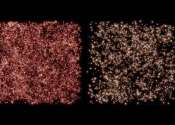A dusty, compact object bridging galaxies and quasars at cosmic dawn
An international effort led by astrophysicists at the Niels Bohr Institute, University of Copenhagen, and the Technical University of Denmark has identified a distant object with properties that lie between those of a galaxy ...









